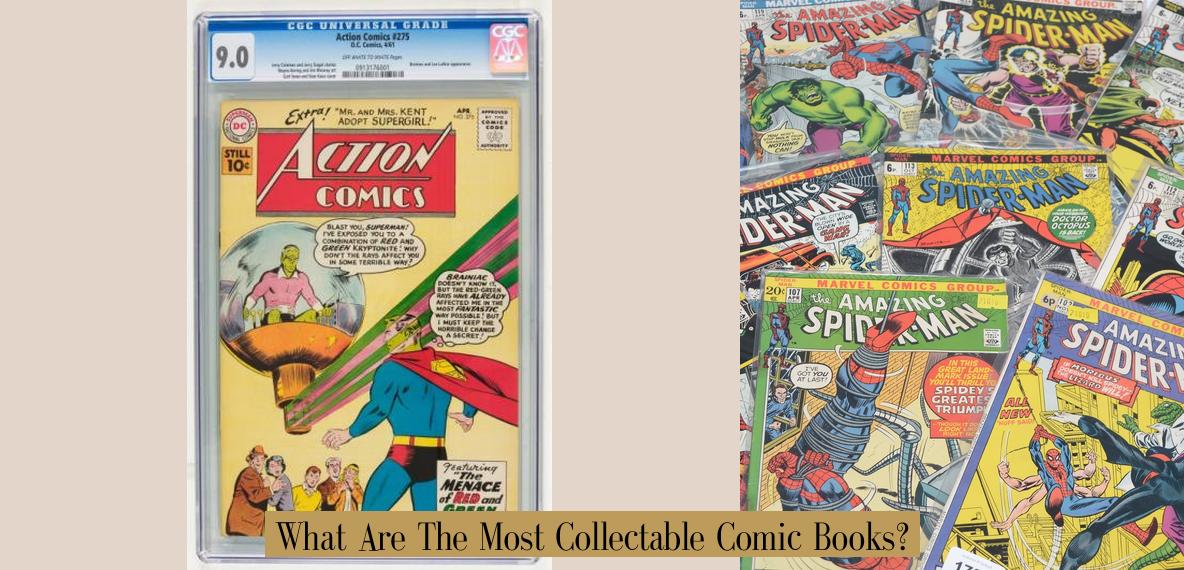The Quest for the Holy Grail of Comics: Unveiling the Most Collectable Comic Books
Let’s face it, we all have that one friend who’s obsessed with comic books. You know, the one who can recite every Spider-Man origin story by heart and can tell you the difference between a “CGC 9.8” and a “CBCS 5.5” without breaking a sweat. They’re the ones who dream of owning a piece of comic book history, a tangible link to the heroes and villains that have captivated generations. But for those of us who haven’t quite reached the level of “comic book connoisseur,” the world of collectible comics can seem like a confusing labyrinth.
So, what are the most collectable comic books? Well, buckle up, buttercup, because the answer is not as simple as you might think.
The Holy Grail: Action Comics #1, Detective Comics #27, and the Rise of the “First Appearance”
Let’s start with the classics: Action Comics #1 and Detective Comics #27. These are the first appearances of Superman and Batman, respectively, and have long been considered the holy grail of comic book collecting. These two issues have consistently held the top spots for the most valuable comics, commanding astronomical prices. But the comic book market, like any good superhero story, is full of twists and turns.
In recent years, Amazing Fantasy #15 (the first appearance of Spider-Man) and Superman #1 have surged in value, closing the gap on the legendary duo. In fact, a Superman #1 graded 8.0 CGC sold for a staggering $5.3 million, setting a new record for the most expensive comic book purchase ever.
This shift in the comic book hierarchy demonstrates a key principle: first appearances matter. The debut of iconic characters like Spider-Man or Superman is a huge deal to collectors, driving up the value of these issues.
Beyond the Golden Age: The Rise of the Silver Age and Beyond
While the Golden Age (roughly 1938-1956) holds a special place in comic book history, the Silver Age (1956-1970) also boasts some serious contenders for the most collectable comics. This era saw the rise of Marvel Comics and the creation of beloved characters like the X-Men, the Fantastic Four, and the Hulk.
X-Men #1 is a prime example of a Silver Age comic that holds significant value. Considered the “first appearance” of the iconic X-Men team, it’s sold over 8.2 million copies, making it the best-selling American single-issue comic of all time. Not bad for a book published in 1991.
But it’s not just about the first appearances of heroes.
The Importance of Condition: It’s Not Just What You Have, but How You Keep It
The condition of a comic book is crucial to its value. Think of it as the difference between a dusty, forgotten artifact and a museum-worthy masterpiece. A comic book graded CGC 9.8 (basically, mint condition) will fetch a significantly higher price than a copy graded CGC 5.0 (showing signs of wear and tear).
The CGC (Certified Guaranty Company) is a third-party grading service that sets a standard for comic book condition. They provide a numerical grade based on a variety of factors, such as the quality of the paper, the presence of creases or tears, and the clarity of the colors.
So, if you’re thinking about investing in comic books, get yourself a magnifying glass, a white glove, and a subscription to CGC’s website.
Beyond the Big Names: The World of Rare and Unique Comics
But wait, there’s more! Not all valuable comics are first appearances of major superheroes. Sometimes, it’s the rarer, less-known issues that can be the real gems.
Think of it this way: you wouldn’t just buy a first edition of “The Great Gatsby” because it’s a classic, would you? (Okay, maybe you would, but that’s beside the point.) You might also be interested in a first edition signed by F. Scott Fitzgerald, or a copy with a unique inscription.
The same principle applies to comic books. A rare variant cover or a comic book signed by the original artist can be incredibly valuable. And don’t forget about promotional comics, which are often limited editions and can be highly sought after.
So, how do you know what comics will be worth money?
It’s a bit of a gamble, but here are some things to consider:
- Popularity: The more popular a character or a comic book series, the more likely it is to appreciate in value.
- Rarity: Limited editions, variant covers, and promotional comics are often more valuable.
- Condition: A well-preserved comic book will always fetch a higher price than a damaged one.
- Historical Significance: Comics that have played a significant role in comic book history or culture are likely to be highly sought after.
The Bottom Line: Investing in Comic Books is a Gamble, but a Fun One
Investing in comic books is a bit like playing the lottery. There are no guarantees, but the potential rewards can be huge. If you’re willing to do your research, be patient, and learn about the comic book market, it can be a rewarding hobby – and potentially a profitable one.
But let’s be honest: most of us are collecting comics for the love of the stories and the characters.
So, don’t worry too much about the market value. Just enjoy the journey, and remember, a comic book is only as valuable as the memories you make with it.
Now go forth and collect your hearts out!
P.S. I’m not a financial advisor, so don’t take my word for it. Do your own research before investing in comic books. And remember, never invest more than you can afford to lose.
P.P.S. I’m just kidding about the magnifying glass and white glove. Unless you’re actually planning on buying a $5 million comic book, in which case, you better get yourself some high-quality handling equipment. Just saying.
